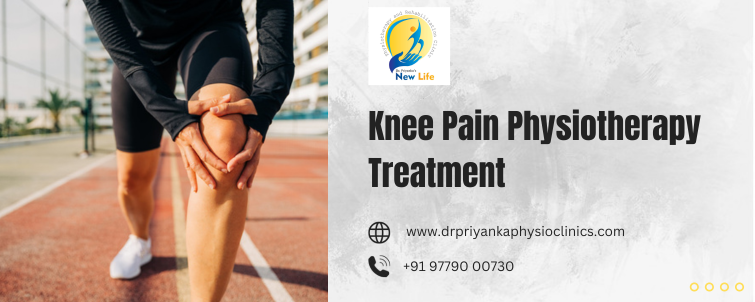



Table of Contents
ToggleKnee pain is a common issue that affects people of all ages, often impacting daily activities and mobility. For many, physiotherapy offers a safe, effective way to reduce pain, improve strength, and restore function in the knee. By targeting the underlying causes of knee pain, physiotherapy helps individuals regain mobility and enhance their quality of life without invasive treatments. In this article, we’ll explore various knee pain physiotherapy treatment methods, exercises, and recovery tips to help you achieve lasting relief and mobility.

Knee pain can arise from various factors, such as injuries, arthritis, or overuse. Physiotherapy treatment for knee pain addresses the root causes of discomfort through targeted exercises and therapeutic interventions. Physiotherapists assess individual needs to create personalized treatment plans, which may include strengthening exercises, stretching, and manual therapies. These interventions not only relieve pain but also improve the knee’s flexibility and stability, reducing the risk of future injuries.
Benefits of Physiotherapy for Knee Pain Relief
The advantages of physiotherapy for knee pain relief are vast. Here are some of the primary benefits:
Effective knee pain physiotherapy treatment relies on exercises designed to increase strength, flexibility, and stability. Here are some common exercises recommended by physiotherapists:
1. Straight Leg Raises
Straight leg raises help strengthen the quadriceps, which support knee function. Lie flat on your back with one leg bent and the other straight. Slowly lift the straight leg to about 12 inches, hold, and then lower it slowly.
2. Hamstring Curls
Hamstring curls strengthen the back of the leg, balancing knee support. Lie on your stomach, lift one foot toward your glutes, hold, and lower. You can increase resistance with ankle weights as you progress.
3. Wall Squats
Wall squats work to strengthen both quadriceps and gluteal muscles, supporting knee stability. Stand with your back against a wall and lower yourself as if sitting in a chair. Hold for 5-10 seconds, then slowly stand back up.
4. Calf Raises
Calf raises strengthen the lower leg muscles, contributing to knee stability. Stand with feet shoulder-width apart, rise onto your toes, and slowly lower back down. This can also help improve balance and ankle stability.
5. Step-Ups
Using a low step or platform, step up with one leg, bringing the other leg up, and then step back down. This strengthens the muscles supporting the knee, improving balance and coordination.
In addition to exercises, physiotherapists use manual therapy techniques to reduce knee pain and improve joint mobility. Common methods include:
These hands-on treatments complement exercise therapy, making knee pain physiotherapy more comprehensive and effective.
To get the best outcomes from knee pain physiotherapy treatment, follow these tips:

Knee Pain Physiotherapy Treatment is an effective and sustainable approach for managing and reducing knee discomfort. Whether due to injury, arthritis, or overuse, physiotherapy provides a structured plan to improve knee function, strength, and flexibility. By incorporating a combination of exercises, manual therapy, and lifestyle adjustments, physiotherapy helps patients achieve lasting relief and regain an active lifestyle. Start your journey toward knee pain recovery with the help of a trained physiotherapist, and experience the benefits of a tailored, non-invasive treatment plan.
Get in Touch with the Knee Pain Physiotherapy Treatment – Dr. Priyanka Arora at Following contact Details:
